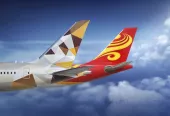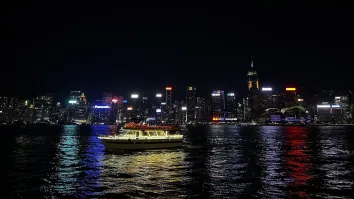
Identifying the demand and pattern of Asian mobility in the air
By Caspar Baum“The social development and increasing wealth cause more and more flexibility, especially of the increasing middle class. Rail- and road infrastructure is under construction, while aviation infrastructure is still in an early planning and development stage due to delayed environmental assessment, air space congestion and Asian wide constraints. The year 2010 was crucial for decision making for most of the Asian countries, to define the strategy and way forward how to develop the necessary domestic, Asian and international air transportation network. Finally also the Chinese government has come up with an implementation strategy and budget schedule, which allows for the first major aviation infrastructure projects to commence implementation.”
The constant growth of transportation in Asia, especially in China, has created a significant demand for sufficient infrastructure close to the urban centres such as Shanghai, Hong Kong, Beijing and Guangzhou. But not only the major metropolitan condensed regions, also remote areas, which very often host the production plants of the Asian fabrication, need to be developed to provide sufficient connectivity to the major consumer- and distribution hubs. Asia is constantly on a move and will need to face challenges in the upcoming years.
Regulation of air space, slot development and addition of new routes, domestic and international, as well as the regulation and modelling of general aviation and the increasing demand of private jet ownership are currently under review and reassessment. The outcome will most likely be a liberalization, flexible and demand driven environment, which allows for the forecasted growth in the next decade.
These actions go in line with the increasing political pressure for environmental awareness, protection of the congested land, the adjacent residential areas and the crowded air space above.
In parallel operators such as airlines, handlers and aircraft leasing agencies prepare themselves for the change in the market and increasing demand, which results in the fact that the scale of airline expansions and large number of aircrafts on order also drives the infrastructure demand. This is not only with regard to commercial aircraft business, but it relates also to the increased liberalization of the Chinese air space for general aviation and private jets. And not only in the air, but also on ground there is currently no sufficient space to host the total number of equipment to start operation within the upcoming 8 years.
Hong Kong International Airport, to mention just one example, will be starting hearings for a third runway and a major airport extension soon. Those developments need to be supported, so that as early as possible constraints and negative impacts to the area affected can be avoided. Airports have become major urban elements, which contribute to the entire metropolitan social and commercial environment.
Airport expansion does not necessarily mean increase of environmental disadvantage. In the Hong Kong case the airport expansion with a third runway can provide necessary flexibility, which allows for various modes of operation that potentially can decrease impact to the adjacent residential areas. This is common practise, which is applied in affected areas, where e.g. 24 hour operations are permitted. In accordance to the take-off-/ approach corridor location and depending on the time window of the day the mode of operation with least impact to the adjacent areas can be applied. Very often this goes hand in hand with close coordination with the affected communities.
5 aspects shall be taken into consideration in this statement.
1. Plan for the worst
It is essential that airports, airline operators and regulators come to common decision making (CDM) to face the uncertain aspects of the development and growth. They have to have proper risk assessment and impact research to develop all necessary tools for the development- and implementation management of the infrastructure.
2. Protect the Environment
Environmental awareness and early assessments of environmental impacts need to be to be on the top of the agenda. Innovative technologies, flexible methods of operation and careful planning will reduce major impacts to the natural environment.
3. Make the Infrastructure financially independent
Modern airport management with effective commercial strategy makes the subsequent steps of necessary airport development financially independent. Latest ‘state-of-the-art’ airports make 40% of their profit from non-aeronautical business. This helps to maintain and update the infrastructure but also ensures that the airport becomes a successful employer with positive effects on the social integration.
4. Link the individual Airport to an overall Aviation Strategy
One single airport cannot survive without being part of an overall plan. This is especially important for the upcoming infrastructure development in Asia.
Common decision making, smart slot coordination and a clear understanding of each role and operational gravity (standard operation, general aviation, cargo hub, tourist destination and low cost product) have to be clearly identified and integrated into an overall plan.
Route assessment, air corridor frequency and capacity as well as all aspects resulting from this, need to be coordinated on the level of a forum, which represents the interests of all stakeholders.
5. Link all means of Transport
Air travel is not independent from ‘on-ground’ mobility. The fastest and most convenient journey in the air is as good as it is accessible on ground.
Airports are not any longer isolated jewels in an urban environment. They have to be easy accessible, integrated into a travel experience, which starts on the ground, towards the airport, and most likely, continues, like this.
Intelligent customer products link these means of travel. Either on wheels or on rail tracks, but even by sea, they need to be linked, part of one strategy and linked to each other.




















 Advertise
Advertise









